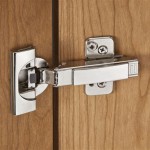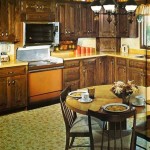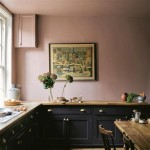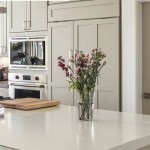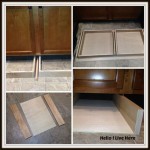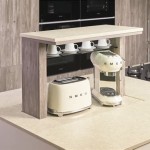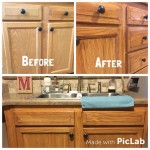Lights Under The Kitchen Cabinets
Under-cabinet lighting in kitchens provides essential task lighting, enhances visibility for food preparation, and contributes to the overall aesthetic of the space. Selecting and installing the right type of under-cabinet lighting requires careful consideration of factors such as lighting type, brightness, color temperature, and installation method.
Several types of lighting are suitable for under-cabinet applications. LED strip lights are a popular choice due to their energy efficiency, long lifespan, and compact size. These flexible strips can be easily adhered to the underside of cabinets, providing a continuous and even light distribution. Puck lights offer a more focused and adjustable light source. They are available in various sizes and finishes, allowing for customization based on cabinet style and lighting needs. Linear LED fixtures provide a seamless and modern look, often integrated within a housing for a cleaner appearance. Halogen lights, though less energy-efficient than LEDs, offer a warm and inviting light quality. However, they generate more heat and have a shorter lifespan.
Brightness, measured in lumens, is a crucial consideration. The required lumens depend on the size of the kitchen and the desired level of illumination. For task lighting, higher lumens are recommended to ensure adequate visibility for chopping, slicing, and other food preparation activities. Ambient lighting, on the other hand, can utilize lower lumens to create a softer and more atmospheric glow. Dimmable lights offer the flexibility to adjust the brightness based on the specific task or ambiance desired.
Color temperature, measured in Kelvin (K), impacts the overall appearance of the kitchen. Lower color temperatures (2700K-3000K) produce a warm, yellowish light similar to incandescent bulbs, creating a cozy and inviting atmosphere. Higher color temperatures (3500K-4100K) emit a cooler, whiter light that resembles natural daylight, ideal for task lighting and highlighting details. Choosing the appropriate color temperature depends on personal preference and the overall design aesthetic of the kitchen.
Installation methods vary depending on the type of lighting chosen. LED strip lights typically come with adhesive backing for easy installation. Puck lights and linear fixtures might require screws or clips for mounting. Hardwired connections offer a more permanent and professional installation, ensuring a consistent power supply. Plug-in options provide greater flexibility for renters or those who prefer a less involved installation process. Battery-operated lights are also available, offering a completely wireless and portable solution, particularly useful for renters or temporary setups.
Connecting under-cabinet lighting to a dedicated switch allows for independent control. This provides the flexibility to operate the under-cabinet lights separately from the main kitchen lighting, optimizing energy consumption and creating customized lighting scenarios. Dimmer switches allow for further control over the brightness, allowing for adjustment based on the specific needs of the task or the desired ambiance.
Integrating under-cabinet lighting with smart home technology offers enhanced control and automation. Smart lighting systems allow for remote control via smartphone apps, scheduling, and integration with other smart home devices. Voice control through virtual assistants further simplifies operation and enhances convenience. Motion sensors can be incorporated to automatically activate the lights when movement is detected, providing hands-free illumination and enhancing energy efficiency.
When selecting under-cabinet lighting, consider the existing kitchen design and the overall desired aesthetic. Choose fixtures and finishes that complement the cabinets, countertops, and backsplash. Consider the size and spacing of the lights to ensure even illumination and avoid shadows. Properly placed lighting can highlight architectural details and enhance the visual appeal of the kitchen.
Maintenance of under-cabinet lighting is relatively straightforward. Regularly dusting the fixtures helps maintain optimal light output and prevents the buildup of grime. Replacing bulbs or LED strips as needed ensures continued functionality and optimal performance. When cleaning the fixtures, ensure they are disconnected from the power source to prevent electrical hazards.
The cost of under-cabinet lighting varies depending on the type of lighting, the size of the kitchen, and the complexity of the installation. LED lights generally offer lower operating costs due to their energy efficiency. While professional installation might incur additional expenses, it can ensure proper wiring and a safe and reliable setup. DIY installation can be a cost-effective option for those with basic electrical knowledge and experience.
Under-cabinet lighting significantly enhances the functionality and aesthetics of a kitchen. Careful consideration of factors such as lighting type, brightness, color temperature, and installation method ensures optimal performance and integration with the overall kitchen design. By selecting and installing the right under-cabinet lighting, one can create a well-lit, functional, and visually appealing kitchen space.

Why Under Cabinet Kitchen Lights Are A Bright Addition To Your Home

How To Buy Under Cabinet Lighting Ideas Advice Lamps Plus

What You Need To Know About Under Cabinet Lighting
Led Under Cabinet Lighting Projects How To Use Strip Lights

How To Choose And Install Led Strip Lights For Kitchen Cabinets

5 Types Of Under Cabinet Lighting Pros Cons 1000bulbs Blog

Under Cabinet Kitchen Lighting Pictures Ideas From

Kitchen Cabinet Lighting Ideas For Your Home Design Cafe

Tips To Choose The Best Under Cabinet Lighting In Your Kitchen Hipcouch Complete Interiors Furniture

How To Buy Under Cabinet Lighting Ideas Advice Lamps Plus
Related Posts

